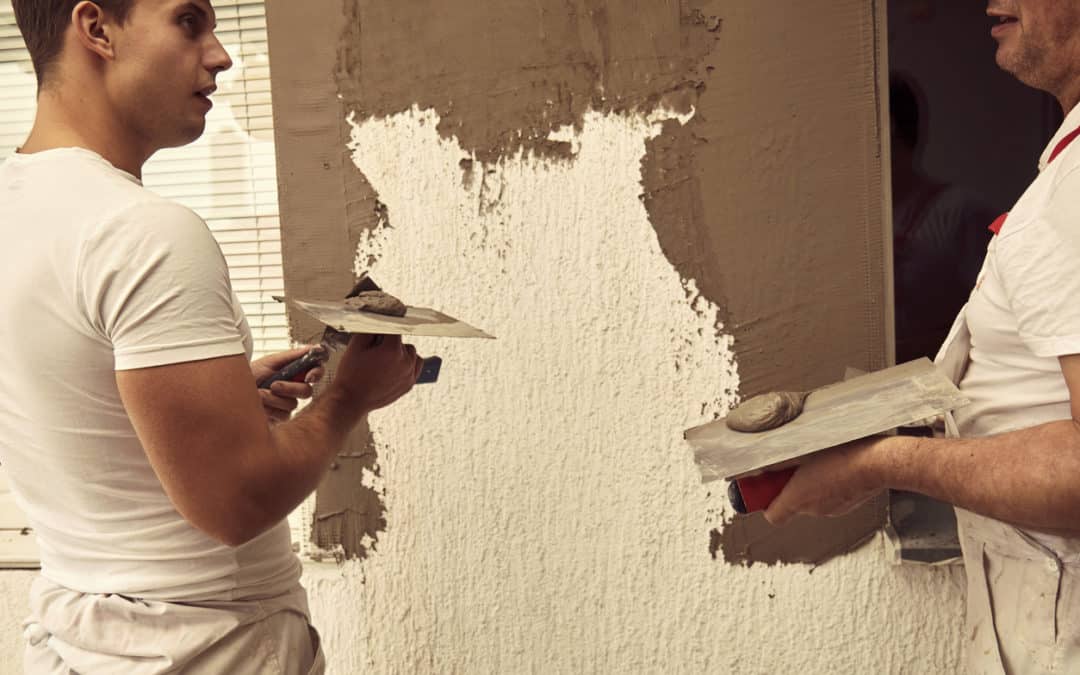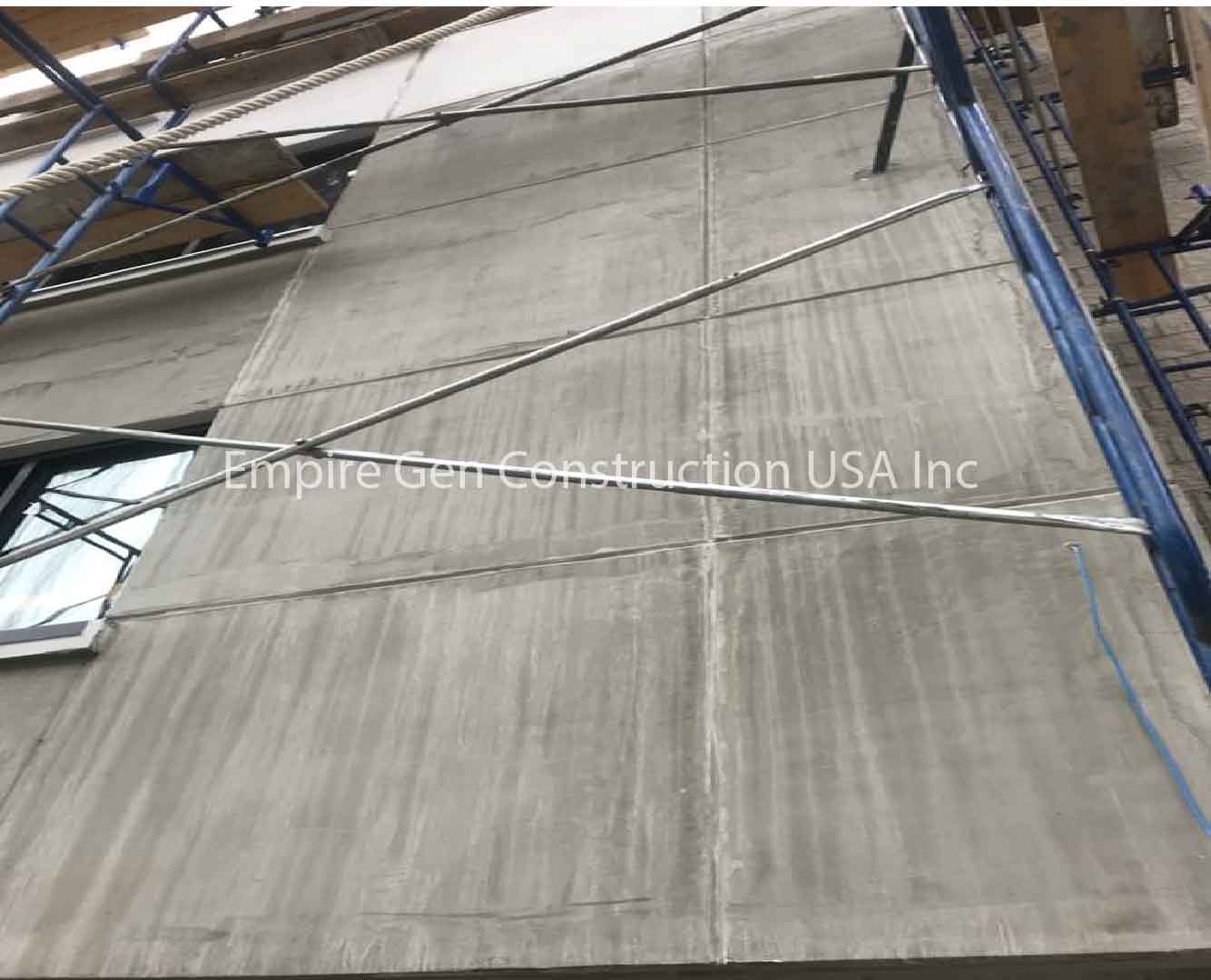Exploring the Convenience of Stucco in Modern Architecture
Stucco has long been acknowledged for its visual allure and adaptability, yet its duty in modern style warrants a closer examination. By exploring its innovative applications, from striking facades to energy-efficient layouts, one can appreciate how stucco is redefining the boundaries of building expression.
Historical Importance of Stucco
The historical significance of stucco is extensive, as it has played a pivotal function in architectural techniques across different societies for centuries. Coming from in ancient worlds, stucco was made use of by the Egyptians and Greeks as a sturdy and versatile coating for both exterior and interior surface areas. Its adaptability to different environments and ability to resemble extra costly materials made it a popular selection.
In the Roman period, stucco came to be a main attractive aspect, made use of thoroughly in public buildings, suites, and holy places. The Romans fine-tuned the application methods, permitting detailed layouts and relief sculptures. Throughout the Renaissance, stucco experienced a rebirth, specifically in Italy, where it was employed in ornamental details and fancy facades, showcasing the virtuosity of the period.

Modern Applications in Style
Stucco has located renewed significance in modern style due to its flexibility and aesthetic allure (stucco contractor). This standard product is progressively utilized in contemporary layout, linking the void between traditional and contemporary looks. Architects and developers appreciate stucco for its adaptability, permitting it to be applied in numerous styles-- from minimal structures to specify Mediterranean designs
In domestic jobs, stucco uses a tidy, smooth finish that improves the visual communication of exteriors. Its capability to satisfy different forms and surfaces makes it an excellent option for both new buildings and restoration tasks. Additionally, stucco's resilience and low maintenance needs add to its growing appeal in metropolitan setups, where resilient materials are necessary.
Commercial applications have actually likewise embraced stucco, with numerous organizations choosing this product to develop welcoming and distinct stores. Making use of stucco in public buildings, such as schools and recreation center, showcases its potential for creating aesthetically attractive environments while supplying outstanding insulation properties.
Shade and Texture Developments
Checking out shade and texture technologies in stucco has opened up new opportunities for designers and designers, enhancing the product's aesthetic influence in contemporary building and construction. Current advancements in pigment modern technology have actually permitted a larger range of colors, enabling designers to produce striking facades that incorporate perfectly with their environments or attract attention as bold architectural declarations. This adaptability in shade option uses engineers the capability to stimulate details emotional reactions and integrate with local aesthetic appeals.
Structure innovations have similarly changed stucco applications. Methods such as troweling, spraying, and marking have caused varied surface area finishes, ranging from smooth and improved to tactile and tough. These variations not only add to the structure's character but also play a critical role in light communication, enhancing the aesthetic deepness and dimensionality of surfaces.
In addition, the intro of artificial stucco choices has broadened style possibilities, offering boosted durability and climate resistance while keeping aesthetic allure. As engineers remain to experiment with innovative shade schemes and textured surfaces, stucco stays a crucial aspect in modern design, showcasing the product's versatility and timeless relevance in contemporary layout.
Sustainability and Energy Performance
Technologies in shade and appearance have not only improved the visual appeal of stucco however also paved the method for better concentrate on sustainability and power efficiency in modern-day architecture. As environmental issues come to be progressively prominent, the building and construction sector is transforming its interest to products that add favorably to environmental balance.
Stucco, made up largely of natural materials such as lime, cement, and sand, offers a lasting option to even more resource-intensive building materials. Its longevity and resilience reduce the demand for constant replacements, thereby reducing waste and source consumption over time. Additionally, modern-day stucco formulas commonly include energy-efficient additives that improve insulation residential properties, lowering cooling and heating costs for buildings.
The reflective qualities of stucco can likewise be crafted to alleviate warm absorption, adding to cooler interior environments and much less reliance on fabricated environment control systems. By advertising power preservation and minimizing the carbon impact of structures, stucco straightens with the concepts of sustainable style. As engineers and building contractors adopt environmentally friendly methods and cutting-edge strategies, stucco attracts attention as a flexible and responsible choice in modern style.

Situation Researches of Stucco Projects
The versatility of pop over here stucco as a building material is exhibited in various successful building jobs that highlight its aesthetic and functional benefits. One noteworthy instance is the restoration of the historical Casa de la Guerra in Santa Barbara, California. The use of stucco not just protected the building's Spanish Colonial Revival style but likewise enhanced its longevity and climate resistance, ensuring durability while preserving building integrity.
An additional engaging situation is the contemporary domestic project, the Cactus Home in Scottsdale, Arizona. stucco contractor. This striking home features a smooth stucco finish that harmonizes with the bordering desert landscape. The stucco's light color mirrors warmth, adding to power efficiency, while the textured surface areas add visual rate of interest
Additionally, the Kings Cross redevelopment in London showcases the adaptability of stucco in urban setups. The application of see this site stucco on contemporary mixed-use structures creates a cohesive visual that respects historical context while welcoming contemporary layout principles.
These study show exactly how stucco can serve numerous architectural objectives, from conservation and power effectiveness to aesthetic enhancement, making it a versatile option in modern design.
Final Thought
 In conclusion, stucco's historical value and contemporary versatility make it a valuable material in modern architecture. Its ability to integrate timeless appearances with cutting-edge layout, integrated with innovations in shade and appearance, boosts its charm. Furthermore, stucco's shielding properties add to power performance, while its sustainable features straighten with present environmental concerns. As shown via various instance researches, stucco remains to play an important function fit the architectural landscape of the modern-day era.
In conclusion, stucco's historical value and contemporary versatility make it a valuable material in modern architecture. Its ability to integrate timeless appearances with cutting-edge layout, integrated with innovations in shade and appearance, boosts its charm. Furthermore, stucco's shielding properties add to power performance, while its sustainable features straighten with present environmental concerns. As shown via various instance researches, stucco remains to play an important function fit the architectural landscape of the modern-day era. 
In verdict, stucco's Go Here historic relevance and contemporary convenience make it a useful material in contemporary architecture.